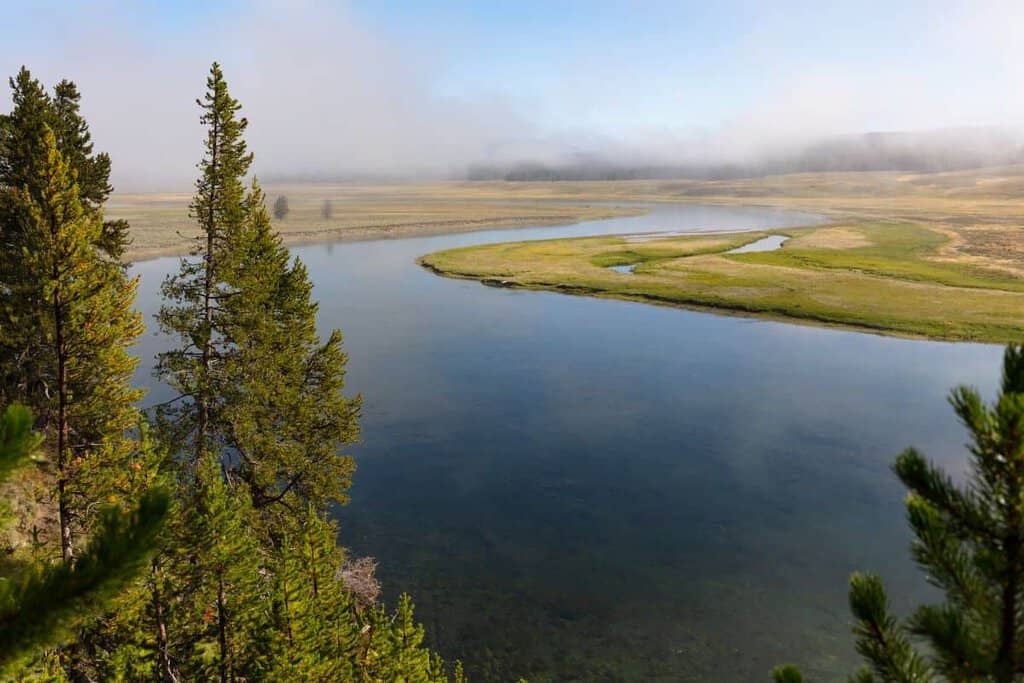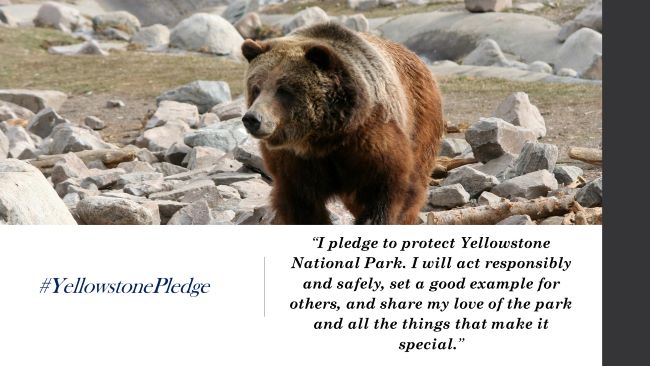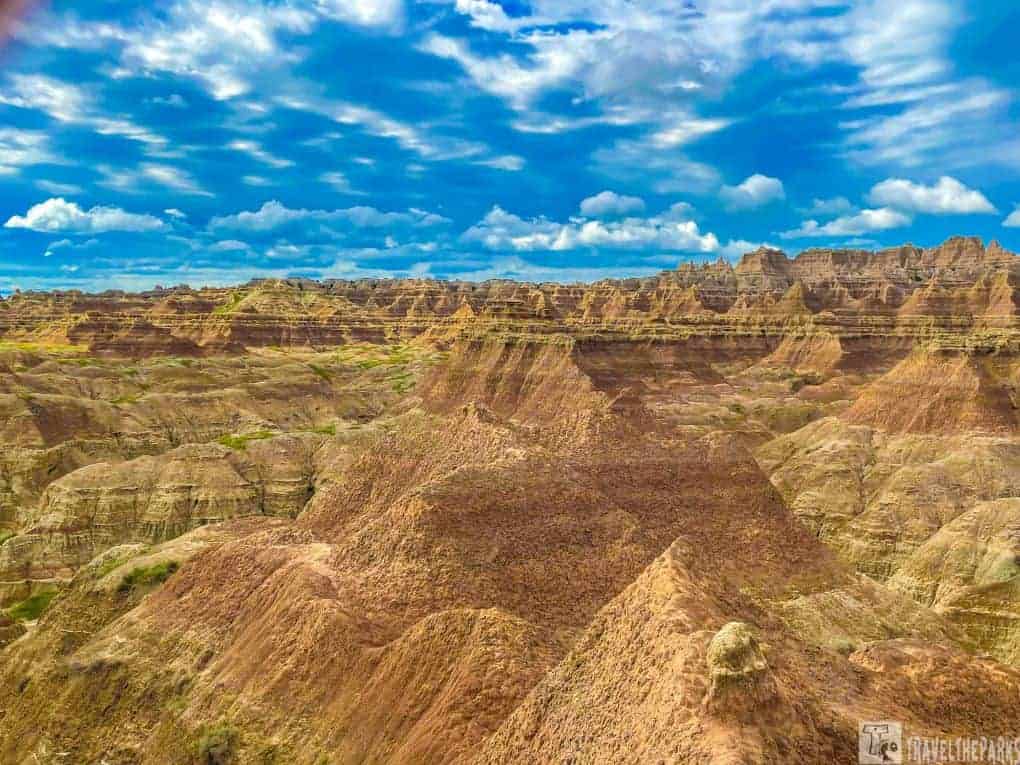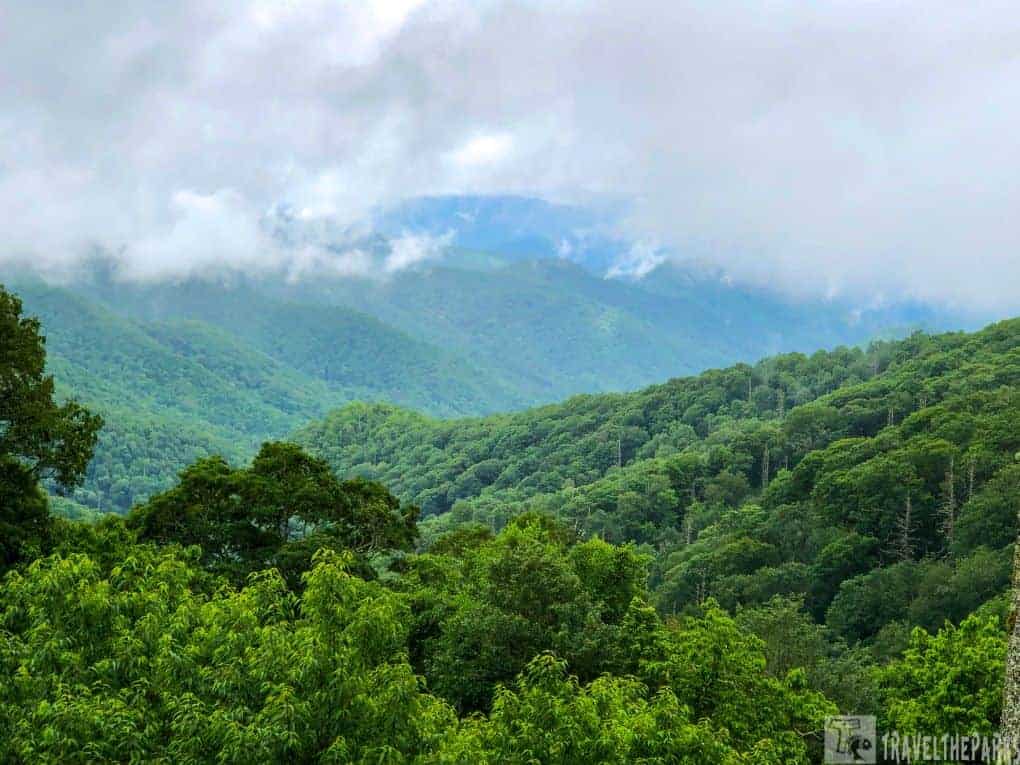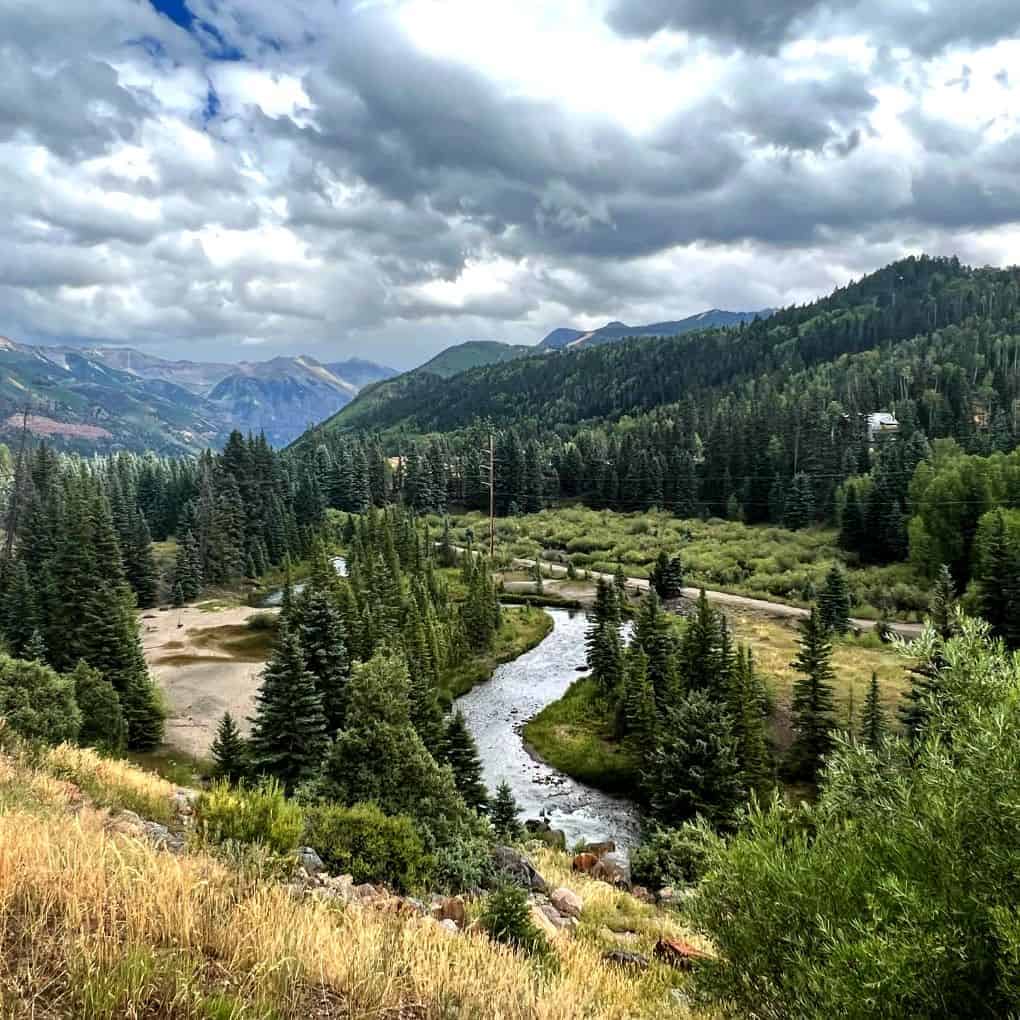Table of Contents
Updated April 28, 2023
The Hayden Valley is truly a Yellowstone gem, central within the park. What to do in the Hayden Valley? Well, start with the scenic drive along the Hayden Valley. The roadway traverses via the Grand Loop Road that runs through the park. The valley is between the park’s Fishing Bridge and Canyon Village areas, making it a convenient stop for visitors traveling between these two destinations.
The Valley is primarily a subalpine meadow that straddles the Yellowstone River. The Hayden Valley area occupies about 50 square miles of the valley floor, which is an ancient lake bed from a time when Yellowstone Lake was much larger. They named this valley after Ferdinand V. Hayden, a geologist who led the first government-sponsored expedition to Yellowstone in 1871.
This post may contain affiliate links, meaning if you purchase something through one of these links, we may earn a small commission at no extra cost to you! Read the full disclosure policy here.

Hayden Valley Travel Guide: Where to Find This Yellowstone Gem
The Hayden Valley is a large, open valley in the central region of Yellowstone National Park. Well known for its expansive grasslands, winding rivers, and abundant wildlife, including herds of bison, elk, and deer. The valley is also home to several bodies of water, including the Yellowstone River and Yellowstone Lake. It is between Yellowstone Lake to the southeast and the Yellowstone River to the northwest. This valley covers an area of approximately 50 square miles and has an average elevation of around 7000 feet above sea level. The valley is accessible via the Grand Loop Road, which runs through the heart of Yellowstone National Park.

Upper Yellowstone River in the Beautiful Hayden Valley
Besides its scenic beauty, the Upper Yellowstone River offers excellent fishing opportunities. This river slowly meanders through a variety of terrain, from alpine meadows and rugged canyons to broad valleys and grasslands. The wide-open endless grassy plains resemble the prairie of yesteryear with gently sloping hills ringed by ranges of jagged mountain peaks. Take your time. There are plenty of pullouts along the road to stop and use the binoculars to look for wolves, bears, and other animals in the wide-open meadows. If you wish to see wildlife at a leisurely pace, the Hayden Valley is a spectacular drive. Along with patience, stopping to view the sights-you can be rewarded!.
Before coming to Yellowstone National Park, invest in some excellent binoculars, spotting scope, or a telescopic lens for your camera.
PRO TIP: It’s definitely worth stopping when you see people with spotting scopes, as they can tell you what they have seen or pointed out things you might not have noticed.

Note: It’s worth noting that the Upper Yellowstone River is a sensitive ecosystem, and visitors are encouraged to practice responsible recreation and respect the natural environment. This includes practicing Leave No Trace principles and following any posted regulations or guidelines.
The Iconic American Bison-Hayden Valley Symbol of the West
The American Bison is an iconic symbol of the American West and a prominent feature of the Hayden Valley in Yellowstone National Park. We quickly spotted a few bison grazing in the distant meadows. As we rounded a hill, we came across a herd of what must have been almost 80 animals, including many calves (red dogs). If you are looking for the infamous traffic jams caused by wildlife crossing, then Hayden Valley is the place to go. You will certainly encounter traffic from bison either crossing the road or just walking alongside the road. You can find bison in the valley at any time of the day. We stopped at one turnout to watch the bison youngster’s head butting, chasing each other and wallowing in the dust.

Hard to imagine, but Bison once roamed across the Great Plains of North America in herds numbering in the millions, but hunting and habitat loss nearly drove them to extinction by the late 1800s. Today, the Hayden Valley is home to one of the largest herds of bison in the world, with an estimated 4,000 animals.
Bison are an important species, both ecologically and culturally. They help to shape and maintain grassland ecosystems, and many Native American tribes who have a long history of hunting considered them sacred and relying on bison for food, clothing, and other resources.
PRO Tip: Stay 100 yards (91 m) from bears and wolves. Stay 25 yards (23 m) from all other animals

Here are some Things to Do and See in Hayden Valley:
- Wildlife watching: Hayden Valley is one of the best places in Yellowstone to see wildlife, including bison, elk, grizzly bears, wolves, and coyotes. Be sure to keep a safe distance and never approach the animals.
- Hiking: There are several hiking trails in the area, including the Mary Mountain Trail and the Hayden Valley Trail. These trails offer beautiful views of the valley and surrounding mountains.
- Fishing: Fishing opportunities for trout and other species are excellent along the Yellowstone River in Hayden Valley.
- Scenic drives: In Hayden Valley, you can enjoy scenic views of the surrounding snow-capped mountains and lush green valley along the road. Be sure to watch for wildlife along the road.
- Photography: Landscapes and wildlife are abundant in Hayden Valley, making it a photographer’s paradise.
- Yellowstone Lake: Hayden Valley ends at Yellowstone Lake, the largest lake in the park. Among the most popular activities are boating, fishing, and hiking.

Some of the Best Hiking is in the Hayden Valley
If you want a different perspective of the valley, there are two well-known trails accessible to hikers—the Howard Eaton Trail and the Mary Mountain trail. Be sure to have waterproof hiking shoes to traverse the swampy and muddy trail areas. A quality trekking stick would be helpful on the trail. Always be sure to have a refillable water bottle with plenty of water to quench your thirst.
PRO Tip: Be bear aware. Bear spray is recommended, as fatal bear attacks have occurred along these trails. Bear Spray can either be purchased or rented in the park’s general stores.

Hiking the Howard Eaton Trail-Fishing Bridge to Canyon
PRO Tip: This trail may be closed in the spring because of heavy grizzly bear activity.
The Howard Eaton Trail is a 14.3 mile point-to-point trail that is rated as moderate in difficulty. Most of the trail parallels the Yellowstone River from the Fishing Bridge at Yellowstone Lake to the Grand Canyon of Yellowstone in Canyon Village. This trail is best from June-September. The trailhead for the Howard Eaton Trail is near the Fishing Bridge Visitor Information Center, just off the Grand Loop Road. There is a small parking area at the trailhead, but it can fill up quickly during peak season.
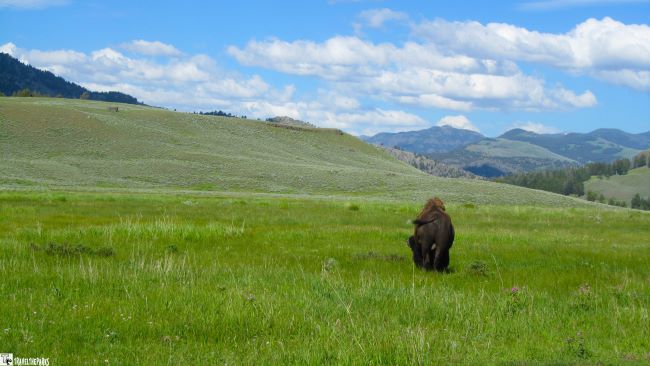
We only went as far as LeHardy’s Rapids, as the trail was muddy in places. We recommend waterproof hiking boots.. Waterproof Socks to keep your feet dry while traversing the smaller creeks. Luckily, most were only ankle deep for us. The Howard Eaton Trail is in grizzly bear habitat, so it is important to carry bear spray and to make lots of noise while hiking to avoid surprising any bears.
Hiking the Howard Eaton Trail typically takes 4-5 hours, depending on your pace and how often you stop to take in the amazing views. There is some elevation gain that provides amazing views of the Hayden Valley and the Yellowstone River. From the Fishing Bridge trailhead, the route follows the old Yellowstone road used in the early 1900s for about a mile.

Hiking Mary Mountain Trail (Mary Mountain Trail – Nez Perce Trail)
We did the Mary Mountain Trail as an out and back to Mary Mountain Lake, a moderate 20-mile hike through the valley to the lake. The trail reaches a maximum elevation of 8357 feet. The trailhead is located north of the Alum Creek pullout. You can combine this trail with the Nez Perce Trail for a 20-mile hike point to point ending at the Old Faithful area. Prime wildlife habitat bison, frequent the trail, so remember to yield to the bigger beast. There are no reliable water sources along the trail, so hikers should bring plenty of water or a water filter to treat water from streams.
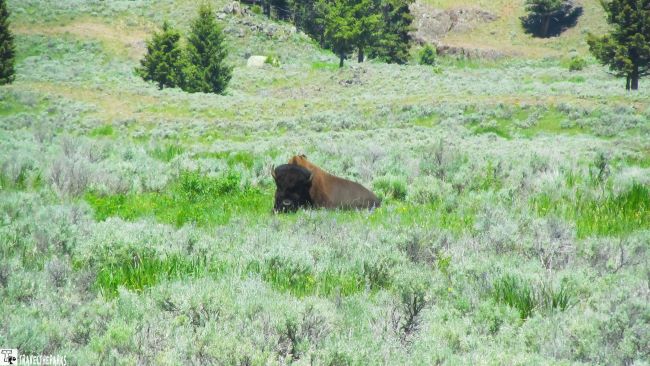
NOTE: Please remember to give at least 25 yards to the bison.
We found the trail is fairly easy to follow. It moves through pine forests, meadows, with great views of the surrounding mountain ranges. The trail also passes through areas affected by the 1988 Yellowstone fires, providing a chance to observe the forest’s slow recovery.
If you continue onto the Nez Perce trail, you will traverse through the forest and eventually follow Nez Perce Creek. This is a long day hike, so the best advice is to start early. There are several backcountry campsites along the Mary Mountain Trail, but a backcountry camping permit is required. Permits can be obtained at any backcountry office or ranger station in the park.
Scenic Drive Grand Loop Road South
Take your time driving the Grand Loop Road through the valley. Even if you don’t see any wildlife, this is still a beautiful drive. The natural beauty all around in the park, you can’t help but be inspired.
Stopping at a small turnout, we walked along the river, seeing a few large cutthroat trout in the clear waters of the Yellowstone River. Currently, fishing regulations say this area of the river here is permanently closed for fishing. They protect the cutthroat trout in these waters. The rule states the Yellowstone River and its tributaries in Hayden Valley from the confluence of Alum Creek upstream to Sulphur Cauldron.

LeHardy’s Rapids Picnic Area
This is one of those small areas off the Grand Loop Road you can pull off just before reaching the Mud Volcano. It is a natural area where the Yellowstone River flows through a narrow volcanic canyon, creating a series of rapids and cascades.
We were able to access the area from the LeHardy’s Rapids Picnic Area, which has a parking lot and restrooms. A short trail along a boardwalk takes you to the rapids. The viewing platform at LeHardy Rapids is accessible by wheelchair and stroller, and there are several interpretive signs explaining the geology and ecology of the area.

Interestingly enough, LeHardy’s Rapids is named after a trapper and trader named J.B. LeHardy, who operated in the Yellowstone region in the mid-19th century. Although LeHardy died in 1901, his name lives on in many places throughout Yellowstone National Park, including LeHardy Rapids, LeHardy’s Rapids Picnic Area, and LeHardy’s Fishing Bridge. The name is a tribute to his contributions to the early exploration and development of the Yellowstone region.
Interpretive displays explained that the Yellowstone River creates the rapids, flowing over a layer of hard volcanic rock, which has eroded into fascinating shapes and formations. The river drops about 20 feet over a distance of half a mile, creating white water and rapids that can be seen and heard from the viewing platform.

Viewing the Mesmerizing Rapids
The LeHardy Rapids are a great place to view the power and beauty of the Yellowstone River. If you are lucky, you may see a bison herd cross your path or see an otter fishing for breakfast. LeHardy rapids are a nice place to stretch your legs and take a few pictures. Visitors can walk along the boardwalk that runs alongside the rapids and take in the rushing water and the sound it creates.. LeHardy Rapids is also a popular spot for fly-fishing, with opportunities to catch Yellowstone cutthroat trout and other fish. However, fishing is only allowed with a valid Yellowstone fishing permit, and some restrictions apply. (Closed: The Yellowstone River 100 yards (91 m) up- and downstream of LeHardy’s Rapids)
Visitors to LeHardy’s Rapids may be able to spot Harlequin ducks in the area, especially during the nesting season. Harlequin ducks are small sea ducks that breed in swift-moving mountain streams and rivers in western North America, including parts of Yellowstone. Thus making this an ideal nesting habitat for Harlequin ducks, with its fast-moving water, rocky shores, and dense vegetation.

The Aptly Named Mud Volcano and Sulfur Cauldron
Mud Volcano and Sulfur Cauldron are two of the most fascinating geothermal features in Yellowstone National Park. The Mud Volcano is an active geothermal mudpot with several muddy hot springs and fumaroles. Hydrogen sulfide is gushing out, mingled with the incessant steam. It gets its named from the thick, gray mud that constantly boils and churns inside it, creating a loud and distinctive gurgling sound. The mud is highly acidic and can reach temperatures of up to 200 degrees Fahrenheit (93 degrees Celsius). Mud Volcano has undergone significant changes over the years, with eruptions and landslides altering its appearance and activity. The mud volcano spurts and gushes are quite mesmerizing. It is hypnotic to watch the mud bubble!

Dragon Mouth Spring gets its name from the way the hot water and steam erupt from a cave-like opening in the rock, creating the appearance of a dragon’s mouth We watched as blue pools of boiling water overflow through steaming vents, spewing hydrogen sulfide into the air. Dragon’s Mouth Springs boiling water bubbles as the dragon’s breath incessantly spews steam from the cave. WE could hear the loud growling and rumbling sounds accompanied it. This further adds to the mystical and otherworldly feel of the spring.
Across the road is a Sulfur Cauldron. There isn’t much here, but it is worth a stop as you travel towards Yellowstone Lake. We smelled this before we saw it! The hot spring is known for its bright yellow color and the strong odor of sulfur that emanates from it. We spent only a few minutes observing the hot spring from the boardwalk that wind around its edges. Many visitors skip this venue because parking is very limited, and the overlook is close to the road. Sulphur Caldron is one of the park’s most acidic hot springs, reaching 190 degrees. This is one of the most active areas in Yellowstone.

Planning Resources for Yellowstone National Park-Hayden Valley
- Secure Yellowstone Lodging Early
Book accommodations inside Yellowstone National Park at least 12 months ahead. Check the official Park website for availability at lodges, cabins, and hotels. Demand is extremely high year-round. - RV Rentals for Flexible Exploration
Experience Yellowstone comfortably by renting an RV. This popular option offers freedom to explore Hayden Valley and remote areas at your own pace. Book early through reputable providers. - Campground Reservations & Details
Find official campground information, including locations, amenities, and booking windows, directly on Yellowstone National Park’s campground page. Summer spots fill within minutes of opening. - Official Yellowstone Park Map
Download the National Park Service (NPS) map to visualize Hayden Valley’s location relative to geysers, canyons, and wildlife corridors. Understand driving distances between key sites. - Real-Time Park Conditions & Alerts
Monitor road closures, weather, and safety advisories via the Yellowstone National Park Official Website. Essential for navigating Hayden Valley’s seasonal access changes. - Free Digital Trip Planner
Get a comprehensive free Yellowstone National Park trip planner (digital download) with itineraries, packing lists, and wildlife safety tips tailored to all seasons. - Dining & Picnicking Guide
Explore 52 picnic areas and dining options near Hayden Valley. View restaurant hours, menus, and grocery services on the Park’s official dining page. - Must-Have Yellowstone Tour App: Enhance your drive through Hayden Valley with: NPS Yellowstone App: Live updates on road conditions, geyser eruptions, and facility statuses. Available on iOS (App Store) and Android (Google Play).

Final Thoughts: A True Hidden Gem: What to do in the Beautiful Hayden Valley
Hayden Valley is truly a special place with hidden magic waiting to be discovered. From the towering mountain peaks to the meandering river and the vast grasslands in between, the valley is a haven for wildlife and a paradise for nature lovers. Whether you’re hiking, fishing, or simply taking a scenic drive, there is something for everyone in Hayden Valley. The iconic American bison, the LeHardy Rapids, the Howard Eaton Trail, and the Harlequin ducks nesting in the rapids are just a few of the many wonders that make this area so special.

As you explore the valley, take time to appreciate the little things, like the scent of the wildflowers, the sound of a bird singing in the trees, or the feeling of the sun on your face. Yellowstone National Park is a place of incredible beauty and natural wonder, and Hayden Valley is just one of the many hidden gems waiting to be discovered by those who are willing to seek it out. So, get out there and discover the hidden magic of Hayden Valley for yourself!
Have you been to the Hayden Valley? What did you see and do on your Yellowstone adventure? Share your thoughts and highlights below by leaving us a comment.

